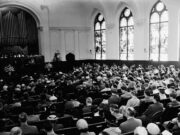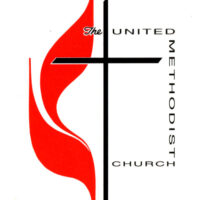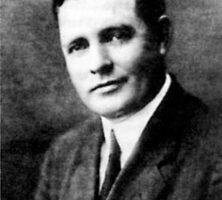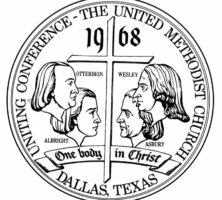The United Methodist Church (UMC) is a major Protestant denomination in Georgia and the largest Methodist denomination in the state.
Created in 1968, the UMC was formed by the union of the Methodist Church and the Evangelical United Brethren, both of which were the products of earlier unions. All had similar beliefs and institutional structures, as well as a long historical association with one another, and their mergers were representative of a larger ecumenical trend among twentieth-century Christians.
History
The various divisions and mergers of the Methodist Church began soon after its establishment in America. Founded in England by John Wesley in the 1730s, Methodism reached the American colonies during the 1760s. After the Revolutionary War (1775-83), American Methodists sought to create a denomination separate from the Methodist Church in England. As a result, the Methodist Episcopal Church, the first organized body of the denomination in America, was formed on December 24, 1784, at a meeting in Baltimore, Maryland. Thomas Coke and Francis Asbury were ordained as bishops during this initial meeting, known as the “Christmas Conference,” and the following year Coke and Asbury assigned Beverly Allen to be the first Methodist missionary to Georgia.

During the nineteenth century, the Methodist Episcopal Church suffered from divisions at the national level, the effects of which were evident in Georgia. First, reaction against centralized authority led to the organization in 1828 of a new denomination, initially called the Associated Methodist Churches. At an 1830 meeting in Baltimore, the leaders of this new denomination officially adopted the name Methodist Protestant Church, and that same year they formed the Georgia District of the Methodist Protestant Church in Newton County at the Salem Camp Ground. In 1853 membership in the Methodist Protestant Church in Georgia totaled more than 3,000.
Methodist Episcopal Church, South
In 1844, as the abolitionist movement gained momentum in the North, a rift between northern and southern congregations of the Methodist Episcopal Church occurred at the denomination’s General Conference. The dispute centered on the bishop of Georgia, James Osgood Andrew, who had inherited enslaved laborers two years earlier upon the death of his first wife. In a vote of 110 to 69, delegates to the convention passed a resolution asking Andrew to step down as bishop while he remained an enslaver. Southern delegates, in response, chose to break with the General Conference and form the Methodist Episcopal Church, South (MECS) through an official Plan of Separation. The MECS remained a separate entity, with its own General Conference, until 1939.
During the Civil War (1861-65), the Georgia Conference of the MECS continued to function, although its General Conference did not convene until the end of the war. Neither the General nor Georgia conference officially supported secession. Eleven Methodist missionaries and seven Methodist chaplains provided religious services to Confederate forces during the war. Beginning in 1862 Georgia Methodists also contributed to the Soldiers’ Tract Association, a mission of the MECS that provided bibles, hymnals, and other religious publications to the Confederate army. In 1866 the Georgia Conference of the MECS was divided into the North Georgia Conference and the South Georgia Conference, and by 1870 the MECS in Georgia had recovered both members and financial resources to the prewar levels of 1860.
The strength of the MECS in Georgia prevented other Methodist denominations from gaining a strong foothold in the state. In 1867 the Methodist Episcopal Church attempted to reestablish a presence in the South by creating a Georgia conference, which struggled to attract new members from both white and African American MECS communities. In 1876 Black members of the Methodist Episcopal Church established a separate conference, known as the Savannah Conference. That same year, delegates from the Methodist Episcopal Church and the MECS formed a commission to begin negotiations for reunification.
Additional competition for members arose after the Civil War with the arrival of two Black northern denominations, the African Methodist Episcopal Church and the African Methodist Episcopal Church, Zion, both of which ministered to newly freedpeople. In addition, a group of Black MECS leaders broke away from the General Conference in 1870 to form the Colored Methodist Episcopal Church (later the Christian Methodist Episcopal Church).
Methodist Church
In 1908, as the negotiations for reunification between the MECS and the Methodist Episcopal Church continued, the Methodist Protestant Church joined the talks as well. During years of negotiations, continuing southern hostility to the Methodist Episcopal Church led that denomination to combine its Georgia and Alabama conferences in 1912, and that same year it formed the Atlanta Area within the newly combined conference. Meanwhile, the position of women in the MECS was strengthened in 1918 when they gained laity rights, which allowed them to take leading roles in supporting domestic and foreign missions. During the next twenty years, the Woman’s Missionary Council of the MECS (established in 1878 as the Woman’s Missionary Society) sponsored hundreds of local mission societies in Georgia.
In 1937 the unification plan for the three denominations was complete, and in 1939 the MECS, Methodist Episcopal Church, and Methodist Protestant Church merged to form the Methodist Church. The Central Jurisdiction was created simultaneously as a separate body for African Americans within the Methodist Church. At the time of unification the combined membership of the North Georgia and South Georgia conferences of the MECS was 273,500, while the Methodist Episcopal Church reported 4,715 white members in the state.
The Great Depression had a severe impact on Methodism, both in Georgia and at the national level. Under the leadership of Arthur J. Moore, a native Georgian who had been elected bishop of the MECS in 1930, the denomination organized a Bishops’ Crusade in 1937 to raise funds. As a result, church attendance, finances, and benevolence were increased across the nation. Out of Aldersgate, a manual for the crusade, was prepared by W. T. Watkins, a Georgian who was elected bishop of the MECS in 1938, the year before unification went into effect.
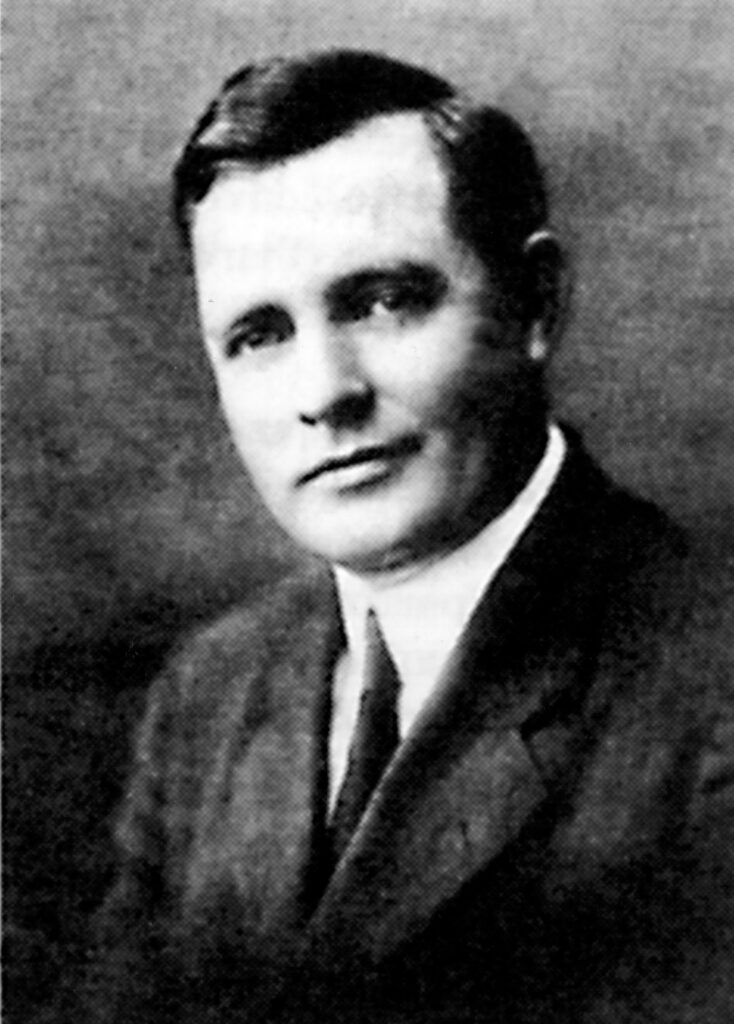
In 1940 Bishop Moore was appointed leader of the Atlanta Area of the Methodist Church, which included all of Georgia and Florida. In 1948 the area was reduced to cover only Georgia. Moore served until 1960 and was concurrently president of the denomination’s General Board of Missions and Extension. The Atlanta Area was divided into North Georgia and South Georgia conferences and subdivided into twenty-one districts under the episcopal leadership of John Owen Smith, who served from 1960 until 1972. Another Georgian, William Ragsdale Cannon, dean of the Candler School of Theology at Emory University during the 1960s, served as bishop of the Atlanta Area from 1972 to 1980.
Creation of the UMC
In 1968, at the Uniting Conference in Dallas,Texas, the Methodist Church united with the Evangelical United Brethren to form the United Methodist Church. The Evangelical United Brethren, a German denomination founded in the mid-Atlantic and midwestern states, was created in 1946 as a union between the Evangelical Association and the United Brethren in Christ. Although there were no Evangelical United Brethren congregations in Georgia, the merger did affect the state because the Uniting Conference also integrated the denomination by dismantling the Central Jurisdiction. As a result, each annual conference in Georgia absorbed the African American congregations within its region. After the union was completed in 1972, the UMC in Georgia had 1,686 churches and nearly 385,000 members.
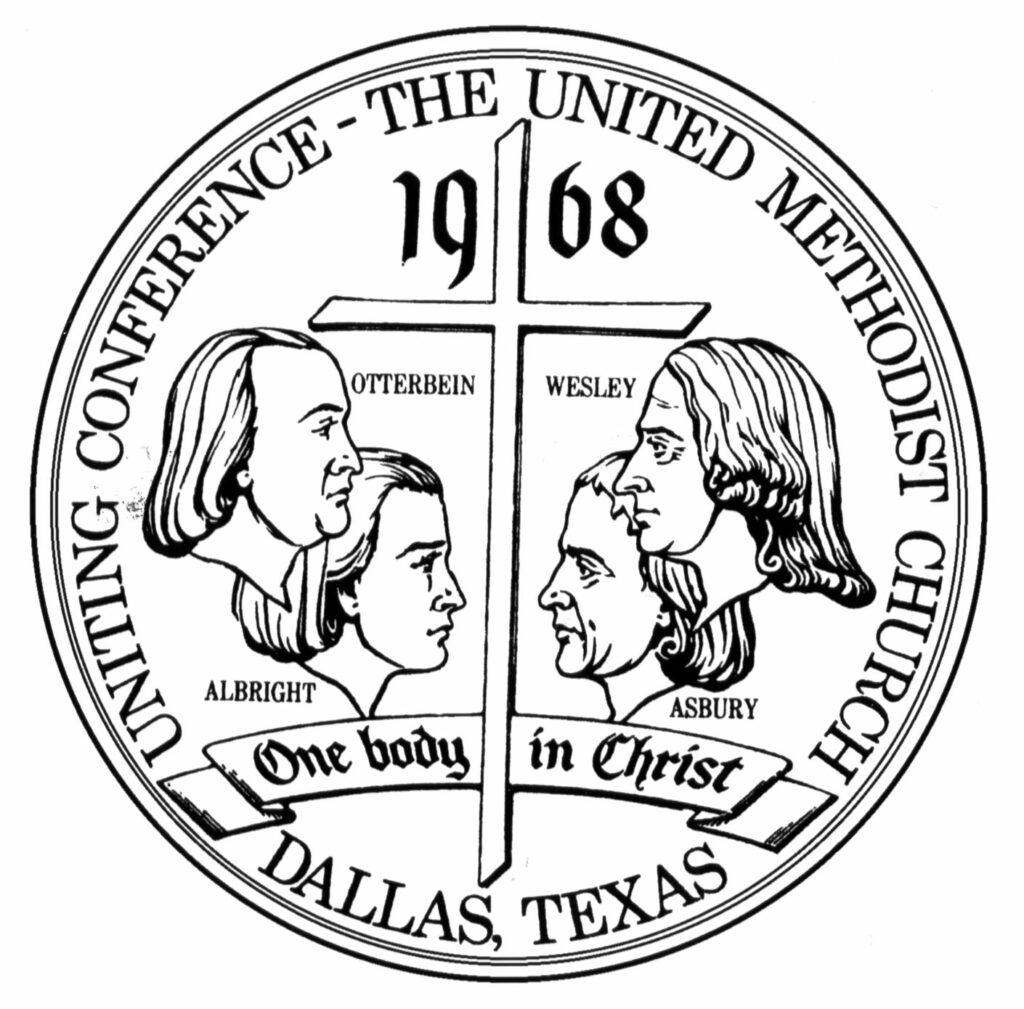
The Uniting Conference also directed that all general and annual conferences of the UMC—including boards, agencies, commissions, and committees at all levels—be composed of equal numbers of lay and clerical delegates elected in annual conferences. One-third of the lay delegates were to be women; young adults, youth, and ethnic minorities were to be included as well. A number of name changes resulted from the merger—for example, the Women’s Society of Christian Service became United Methodist Women, Methodist Men became United Methodist Men, and Methodist Youth Fellowship became United Methodist Youth.
In 1972 the General Conference meeting in Atlanta voted to limit to eight a bishop’s maximum number of service years within a single geographical area.
Recent History
During the administration of Bishop Ernest A. Fitzgerald, who served from 1984 to 1992, the Atlanta Area petitioned the General Conference of the UMC to be divided into two episcopal areas. The request was granted in 1988, the bicentennial year of the first Methodist conference held in Georgia. The North Georgia Conference retained Bishop Fitzgerald, and the South Georgia Conference received its own bishop, Richard C. Looney, who served from 1988 to 2000. From 1992 to 1996 Bishop J. Lloyd Knox led the North Georgia Conference; he was succeeded by Bishop G. Lindsey Davis in 1996. In 2000 B. Michael Watson became bishop of the South Georgia Conference. The UMC in Georgia had a total of 473,564 lay members and 2,070 clergy (full members) in 2003. As of 2005, the North Georgia Conference had 342,045 members, and the South Georgia Conference had 137,822.
Inclusiveness and Outreach
During its first sixteen years, the UMC in Georgia became an inclusive body. It reaffirmed the teaching of its founder, John Wesley, for “salvation by faith, repentance, assurance, and holiness.” It supported such institutions and agencies as colleges, children’s homes, and hospitals that had been founded by earlier generations of Methodists and had now become part of the UMC. But it also enlarged its ministry in urban areas and in the field of health and welfare and offered new opportunities for women and African Americans.
In the late 1960s Church Community Centers were created in Atlanta and Savannah, with a plan to establish a center in every community with a population of 10,000 or more. A Community Outreach Ministry and an Emergency Aid Ministry were formed. In 1968 the Board of Health and Welfare Ministries expanded Magnolia Manor, which had opened in 1963 to provide intermediate patient care. Today Magnolia Manor operates facilities in Americus, Macon, Macon County, Marion County, Moultrie, Richmond Hill, St. Marys, and St. Simons Island.
Wesley Homes, which opened in the 1960s to provide residential facilities to the elderly, expanded to include eight facilities by 1984. Wesley Woods Center, the geriatric division of Emory Healthcare, became a major health provider during this time, while Epworth Towers in Atlanta, Lanier Gardens in Athens, and St. John Towers in Augusta offered residential homes for senior citizens. In the 1980s the Ben Hill UMC in Atlanta was cited as an example of a community-oriented ministry. The minister, Cornelius Henderson, subsequently became president of Gammon Theological Seminary in Atlanta and was elected bishop in 1996.
A few Methodist churches in Georgia had licensed women as local preachers before completion of the union in 1972. In 1959 Ruth E. Rogers became the first full member of the North Georgia Conference, and Marcia Cochran and Allison Morgan became full members of the South Georgia Conference in 1978. Between 1972 and 1984, white women continued to be appointed as pastors, as did several African American men and one African American woman. Essie Simmons, an African American who was appointed as a part-time lay pastor in 1972, became a full member of the South Georgia Conference in 1993. Adolphus S. Dickerson, A. C. Epps, and Harold Gray served as the first Black district superintendents of the North Georgia Conference; Lee Jones served as the first in the South Georgia Conference. In 2004 James Swanson, an African American, was elected bishop while serving as a district superintendent in the South Georgia Conference.
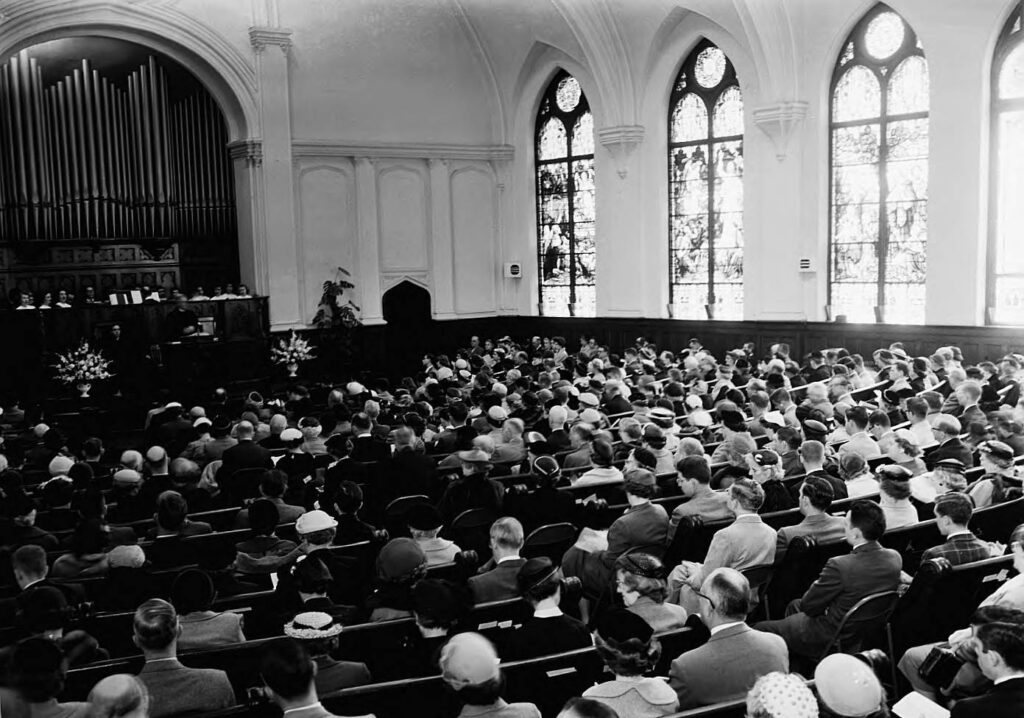
Evangelism, a historic priority among Methodists, received special attention under Bishop Cannon, who was noted for his pastoral and ecumenical concerns. The “Year of Evangelism” in 1973 emphasized the importance of youth in Christian work. Through the World Council of Churches, the National Council of Churches, and the World Methodist Council, Cannon helped to focus attention on world hunger and ethnic minorities. Under his successor, Bishop Joel D. McDavid, who served from 1980 to 1984, the emphasis on youth continued with the initiation of the annual Bishop’s Convocation for Confirmation. In 2004 the UMC in Georgia celebrated the bicentennial of the Methodist Episcopal Church’s founding in the United States with the theme “200 Years of Growth and Progress.”
Church development, lay ministry, and ethnic group ministry have been denominational priorities in recent decades. The organization Volunteers in Missions in 1984 underscored the importance of innovative service both in Georgia and abroad by laity and clergy. A coastal branch of Magnolia Manor opened in 1990 to provide care for senior citizens. Aldersgate Homes in Atlanta opened in 1991 to serve mentally challenged adults. Camp Discovery at Epworth by the Sea began as a center for disadvantaged children in 1992. Four new Wesley Glen Group Homes were completed in 1994 in Jesup and Lyons. The reception of the Immanuel Korean UMC into the North Georgia Conference in 1992 symbolized the diversity of ministry that serves Chinese, Haitian, Hispanic, Liberian, Native American, and Vietnamese missions and congregations.
As of 2002, 291 women and 168 African Americans, as well as Africans, Asians, and Hispanics, served as clergy to 1,599 churches and agencies. Within the state the UMC maintains relations with two theological seminaries, nine universities and colleges, three hospitals, two children’s homes, at least ten institutions for the disadvantaged and elderly, two conference centers, and camp facilities for youth. Since 1972 the UMC has endeavored “to strengthen the fellowship” with other denominations in the Wesleyan tradition. In 1996 the Pan-Methodist Commission on Union was created with members from the UMC; the African Methodist Episcopal Church; the African Methodist Episcopal Church, Zion; and the Christian Methodist Episcopal Church.


